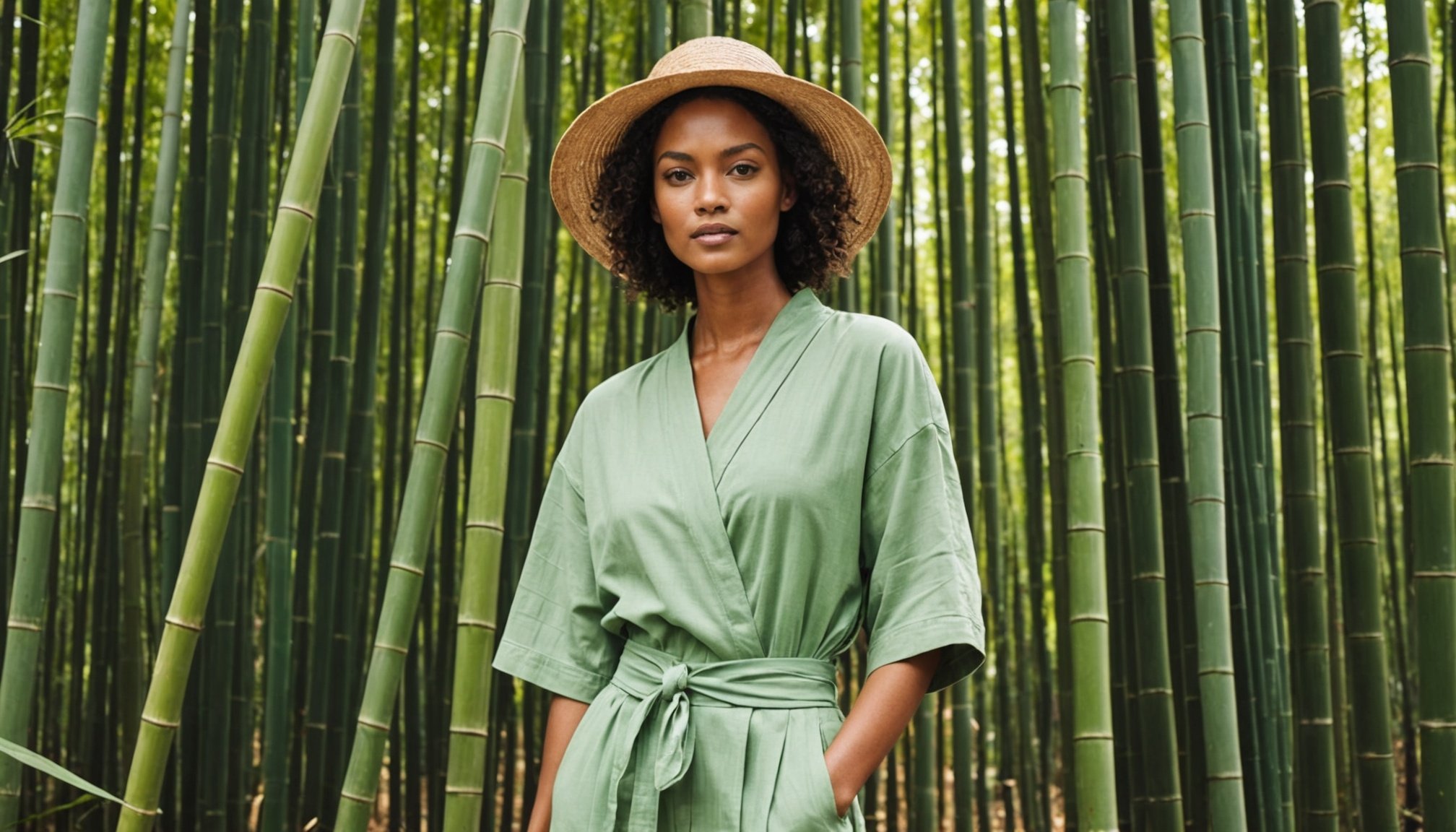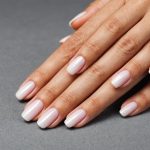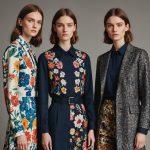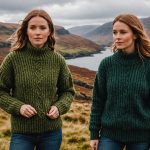Overview of Bamboo Fabric
Bamboo fabric has surged in popularity within the sustainable fashion industry due largely to its eco-friendly nature. At its core, bamboo fabric is a textile derived from the pulp of bamboo grass. The process involves crushing the woody parts of the bamboo plant and adding natural enzymes to create a pulp, which is then spun into fibres. This method positions bamboo as a preferable alternative to traditional textiles.
When compared with conventional fabrics like cotton or polyester, bamboo fabric offers several environmental advantages. Unlike cotton, bamboo grows quickly and can be harvested more frequently without the need for extensive replanting. This results in a lower overall environmental impact. Additionally, bamboo does not require the heavy pesticide load often used in cotton cultivation, making it a safer choice for ecosystems.
Have you seen this : Elevate your style: curate a chic minimalist wardrobe for timeless fashion
What sets bamboo apart in fashion industries are its unique properties. The fabric is naturally breathable and moisture-wicking, making it ideal for clothing. It offers a silky texture that feels luxurious yet provides the durability needed for everyday use. As sustainable fashion continues to evolve, bamboo’s ideal balance of practical and eco-conscious qualities underscores its appeal.
Sustainable Characteristics of Bamboo Fabric
Bamboo fabric’s sustainable characteristics highlight its appeal in eco-friendly textiles. Bamboo is renowned for its rapid growth rate and minimal resource needs, making it an exemplary choice for sustainable fashion. Unlike traditional crops, bamboo thrives without requiring significant amounts of water, fertilisers, or pesticides.
Also to see : Mastering Retinoid Safety: Expert Tips for Your Anti-Aging Skincare Routine
The plant’s natural pest resistance further diminishes the need for chemical interventions, ensuring a cleaner cultivation process. Chemical-free farming of bamboo not only preserves the fabric’s environmentally friendly attributes but also safeguards soil and water integrity.
Beyond its cultivation, bamboo fabric is biodegradable, positioning it as a smart eco-conscious choice. When disposed of, bamboo breaks down more readily compared to synthetic fabrics, reducing long-term waste. This property supports a circular fashion model, aligned with the ethos of sustainable modern living.
Each factor collectively ensures that bamboo fabric leaves a low environmental footprint. By integrating this versatile material into fashion collections, designers participate in a crucial step toward an eco-friendlier future. This stance on sustainability appeals to environmentally aware consumers, seeking products that honour their commitment to the planet.
Environmental Benefits
Bamboo fabric offers notable environmental benefits that align with the ethos of sustainable sourcing. One significant advantage is the reduction in carbon emissions during bamboo cultivation. Bamboo plants naturally sequester carbon dioxide, assisting in mitigating climate change. This capability underscores the eco-conscious choice tied to its production.
Water conservation is another key benefit of bamboo farming. Unlike cotton, which requires considerable irrigation, bamboo thrives with minimal water. By opting for bamboo, industries can contribute to preserving water resources, an essential aspect of environmental sustainability.
Furthermore, bamboo farming supports biodiversity and healthier ecosystems. The low demand for pesticides and fertilisers ensures that local flora and fauna are not adversely affected. With the potential to grow in poor soil conditions, bamboo enhances soil health, promoting ecological balance.
- Sustainable sourcing: Lower carbon footprint, minimal irrigation needs, and natural pest resistance.
- Eco-conscious choices: Bamboo’s inherent benefits offer a sustainable alternative primed for modern clothing ranges.
Incorporating bamboo into textile production not only curtails environmental impact but also presents an opportunity to revolutionise eco-friendly fashion practices.
Style Versatility of Bamboo Fabric
Bamboo fabric showcases a unique fashion versatility, offering a variety of textures and forms. Different types such as viscose and lyocell present diverse aesthetic qualities, making them adaptable for numerous styles. Viscose bamboo, often used in fashion collections, is prized for its silk-like feel and sheen, lending an elegant touch to garments. Lyocell, on the other hand, is renowned for its outstanding softness and wrinkle resistance.
Incorporating bamboo into clothing lines can significantly enhance style versatility. Designers can experiment with an array of looks—ranging from casual wear to sophisticated evening dresses—due to the fabric’s drape and lustrous finish. Bamboo’s breathability and moisture-wicking properties further boost its appeal for both activewear and formal attire.
Real-life examples illustrate how fashion brands excel in utilising bamboo’s diverse qualities. For instance, several eco-chic brands have successfully introduced bamboo into their collections, combining sustainability with cutting-edge design. They employ bamboo fabric in innovative ways, crafting stylish yet functional pieces that resonate with the environmentally conscious consumer. This versatility, paired with sustainability, makes bamboo a favourite choice for fashion-forward designers.
Practical Tips for Incorporating Bamboo into Fashion Collections
Integrating bamboo fabric into fashion collections presents numerous opportunities for designers aiming to embrace eco-friendly fashion. A crucial initial step is to ensure sourcing of high-quality bamboo fabric. Collaborating with suppliers who focus on sustainable and ethical production practices can significantly boost the appeal of your collection. It’s important to verify the sustainability credentials of your suppliers, ensuring they follow eco-conscious methods.
Designing with bamboo presents unique challenges, yet these can be overcome with innovative solutions. Bamboo’s delicate fibres require careful handling during production—employ techniques that maintain the integrity of the material, such as specialised sewing methods. There’s potential to create garments with exceptional comfort and durability.
Another pivotal aspect involves seeking collaborations with sustainable manufacturers who can bring your visions to life. This partnership opens avenues for resource sharing, innovation, and increased market reach—helping to elevate your brand’s eco-conscious profile.
By incorporating such practical approaches, designers can leverage bamboo as a viable option for creating fashion-forward, sustainable collections that resonate well with environmentally aware consumers. The journey towards more eco-conscious fashion thus becomes both manageable and rewarding.
Case Studies of Eco-Chic Fashion Using Bamboo
Several eco-chic brands have pioneered the integration of bamboo into their fashion collections. These success stories underscore the practicality and appeal of bamboo in creating sustainable yet stylish clothing. One prominent example is the brand Boody, which has found success with its bamboo-based basics, showcasing how bamboo can be transformed into everyday essentials that appeal to a wide audience.
These case studies reveal valuable lessons. For instance, the synergy between sustainability and style is crucial. Brands like Thought Clothing have excelled by highlighting bamboo’s sustainable characteristics while maintaining contemporary design elements. They demonstrate that savvy design can elevate eco-friendly fashion from niche to mainstream markets.
The consumer response to these initiatives has been notably positive, reflecting an increasing desire for environmentally responsible products. As sustainable fashion becomes more prevalent, market trends indicate a growing preference for clothing that aligns with consumers’ eco-conscious values. The shift towards bamboo and other sustainable textiles suggests a promising future for brands willing to innovate and connect with the eco-conscious customer base, enhancing their market position while adhering to sustainability principles.
Comparison with Conventional Fabrics
In the realm of fabric comparison, bamboo fabric marks a significant contrast to common materials like cotton and polyester. From an environmental impact perspective, bamboo emerges as a clear winner. It requires fewer chemical treatments and substantially less water than cotton, making it a frontrunner among sustainable textiles. Interestingly, while polyester relies heavily on petroleum-based resources, bamboo’s natural growth process reduces the overall carbon footprint.
Performance attributes also differ sharply. Bamboo fabric boasts durability, offering strength akin to that of polyester, yet combines this with a comfort level that surpasses most cotton products. This makes bamboo an ideal candidate for a wide range of clothing, from activewear to luxurious loungewear.
Meanwhile, consumer preferences increasingly tilt towards eco-friendly choices. Market perception has embraced bamboo fabric as a viable sustainable option, often highlighting it as a modern fabric choice with a sophisticated aesthetic. With its blend of environmental consciousness and performance advantages, bamboo offers a compelling alternative to traditional textiles, signalling a significant shift in consumer demand for greener fashion solutions.











